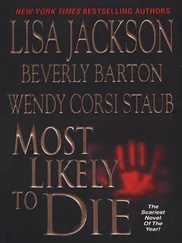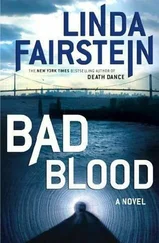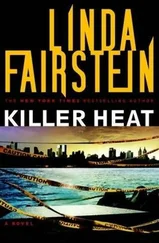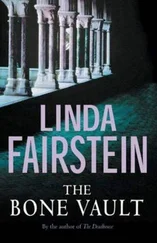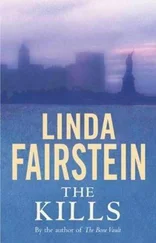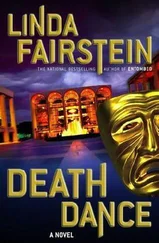“Let’s start with the setup. You all know the basics of this sketch. The main entrance on Forty-eighth Street is the easiest access to Mid-Manhattan. That’s eight sets of double doors right off the street, into the so-called private part of the hospital. It’s a state-of-the-art facility that holds one thousand five hundred and sixty-four beds stretching up over twenty-six flights. I can give you a breakdown of all the floors into medical and surgical departments when you’re ready for that kind of detail. That entrance hall is a bit smaller than the main lobby at Penn Station, and about as attractively populated.”
“What kind of security, Mike?” the lieutenant asked.
“Security? That’s really using the term loosely, boss. Square badges. You might as well have my mother sitting at the information desk handing out passes while she watches her soaps. We’re talking unlicensed, untrained, and unqualified for any kind of serious caretaking.”
He went on. “There aren’t very many of them, either, considering the volume of the traffic passing in and out every day and night. And most of them, when you watch like I did today, stop the old ladies and benign-looking visitors they can safely harass, and let the ones who look like they would cause trouble walk on through without a challenge.
“That’s just the front. There are doors to the street on every side of the main building. They’re only supposed to be used as exits, so they’re locked from the outside. But if you happen to be standing nearby when someone walks out, you can just help yourself right inside and there’s no one there to stop you. Then there’s another bank of doors off the rear, facing the parking area. It’s designed to be just for employees, but there’s not much to get in the way of any passerby who saw an opening and took it.”
McGraw pushed Chapman along. “What about the medical college, where she was killed?”
“ Minuit Medical College, built in 1956 and endowed by the heirs of Peter Minuit, director general of New Netherlands and the man who stole Manhattan from the Indians for twenty-four bucks.” Chapman started drawing arrows from the main building to the sketch of the modern tower that housed the medical school.
“A masterpiece of modern architecture, Chief, and not only is it connected to Mid-Manhattan by a number of hallways and elevators on every floor but also, unbeknownst to me before today, by the series of underground tunnels built in the days when your cronies thought that bomb shelters would save us all in a nuclear disaster. The medical school is a child of the fifties-it was supposed to be a central headquarters in case of an atomic bomb blast in the city-and there’s underpasses and mole holes that could probably stretch to China if you laid ‘em end to end.”
“What’s in them?” Peterson queried Mike.
“Wrong, Loo.Who’s in them, not what. You see those skels out in the pens in the squad room? Those tunnels and rattraps are lived in by hundreds of homeless people. We walked through there this morning-you got sad old men just curled up along the wall asleep, you got junkies with crack vials littered all over the place, you got a girls’ dorm with bag ladies who are dressed like they used to be Rockettes sitting around talking to themselves. In one stretch of roadway, I saw three guys I locked up in ‘94 during a drug sweep and I think the old fat man wearing a silver lamé jumpsuit who was urinating in a corner when we walked by might actually have been Elvis-I’m not sure.”
“Chapman,” the Chief asked, “any sign they get up into the hospital buildings?”
“Every sign. Half of them are dressed in doctor’s scrubs or lab coats-obviously stolen from the floors. They’ve got trays with remains of patient’s meals and empty bottles of prescription pills. They use bedpans for pillows and rubber gloves for warmth. I wasn’t kidding, you open your eyes at night, in that private room your insurance company is dishing out a thousand dollars for, and you gotta see most of these creatures roaming around the hallways. It would either cure you or kill you, no question about it.”
Mike flipped the chart to the next sheet, bringing his marker from the top corner to the middle of the page.
“And don’t forget the third piece of this puzzle, guys. We haven’t yet mentioned the friendly folks at Stuyvesant Psychiatric Center, located just to the south of Mid-Manhattan and, of course, you guessed it-linked to both other buildings on every level above ground and below.”
Wallace whispered to me again, trying to suppress a smile. “He’s about to do Nicholson now-he’s going into theCuckoo’s Nest mode. McGraw’ll go bat-shit.”
Mike was off and running with his next imitation, leading us on his morning tour through all nine hundred and forty-six beds in the psych hospital. He described the patients and their varying degrees of confinement, from the locked wards that held the prisoners declared incompetent while awaiting trial, through the straitjacketed screamers, to the quiet malingerers and psychotic lifers who, by virtue of their familiarity and long-term residence, had more freedom to walk around most of the day.
Peterson tried to make him be serious again. “Don’t tell me these patients aren’t supervised?”
“The most severely ill certainly are, but there are some regulars who seem to have the run of the place.”
“Meaning in and out of the building, into the rest of the Center?”
“Nothing to stop them, Loo. Just put on their slippers and shuffle off down the hall.”
“Past the square badges?”
“Loo, I’m telling you, if one of them walked up to the security guards I talked to today and said, ‘Hi, my name is Jeffrey Dahmer and I’m hungry,’ these morons would give him a pass and direct him to the adolescent clinic.”
McGraw was incredulous. “Jesus, this place was a felony waiting to happen. It’s amazing this is the first.”
“Not so fast, Chief. Cooper’s got a few surprises for you, just to open the field a little wider. If you don’t thinkI have enough suspects to keep us busy, Nurse Ratchett’ll give you something else to worry about. I think we’ve got our best shot of finding our killer among the walking wounded of the underground, but Alex has a few stories that suggest we keep our options open.”
YOU KNOW HOW I HATE TO START OFF BY agreeing with Chapman, but most days it really does look like the inmates are running the asylum,“ I commented as I turned to my padful of case notes, ”and with a good number of problems contributed by some of the staff, too.“
“Chief,” Peterson said by way of explanation to McGraw, who was not used to prosecutors playing a role in a police briefing, “I asked Alex to round up all the sexual assault cases she’s had in any of our hospitals during the last couple of years. My guys wouldn’t know about anything that wasn’t a homicide, so I thought it might be useful ‘cause of the way Dogen got it in this case.”
“Sarah and I pulled everything we could think of, but it’s just a sampling. Any of your loved ones thinking about elective surgery in the near future, try the Animal Medical Center or a visiting nurse service-these big hospitals could kill you. I’ll start close to home.
“Here at Mid-Manhattan we’ve got a few open investigations. The 17th Squad just locked up a janitor who’s only worked in the place for three months. He likes to slip into a white lab coat, look for rooms with women patients who don’t speak English-they don’t seem to question his presence, probably because they can’t. The women assume he’s a doctor, so when he pulls back the covers and starts to do a vaginal exam they submit to it. His name’s Arthur Chelenko-arrested and fired two weeks ago. Only then did Personnel get a record check. He was fired from Bronx Samaritan last year for doing exactly the same thing. Just lied on his résumé-no one checked it out-and he’s back here in business again.”
Читать дальше


